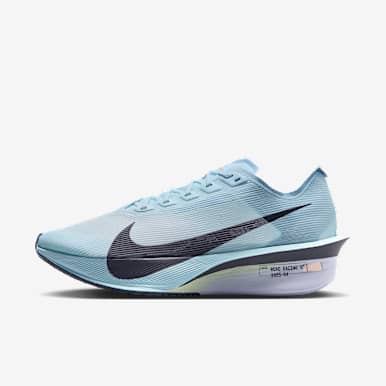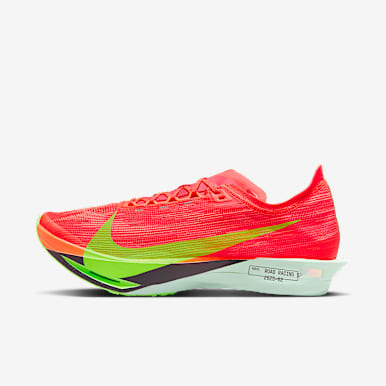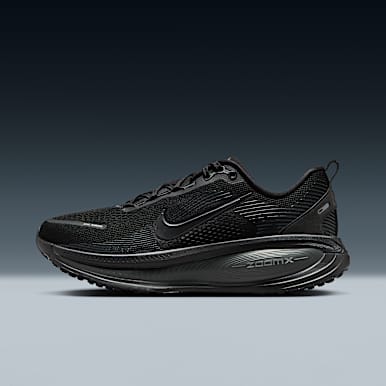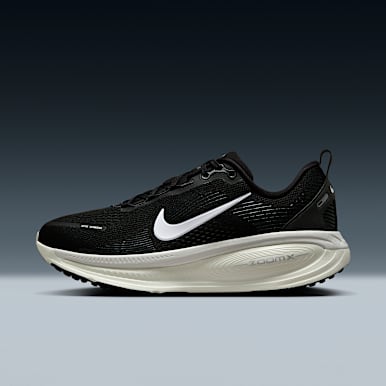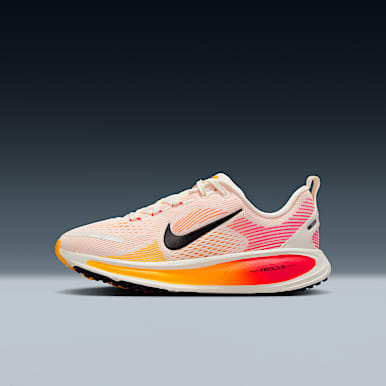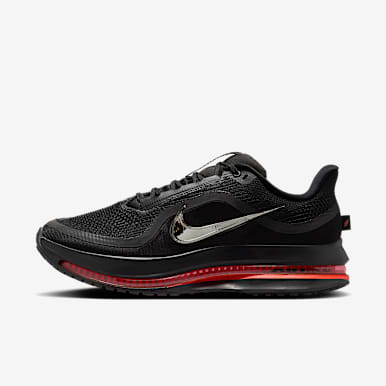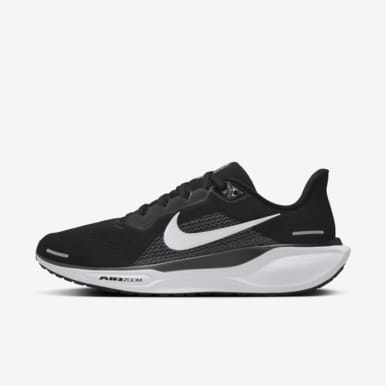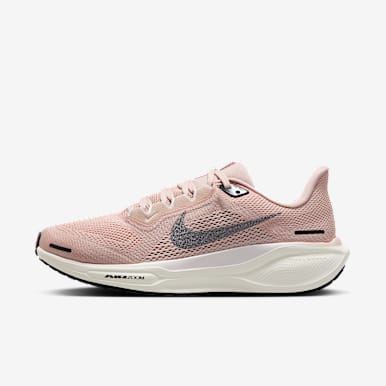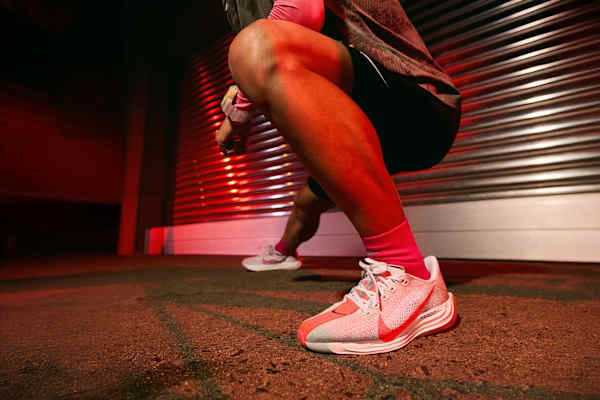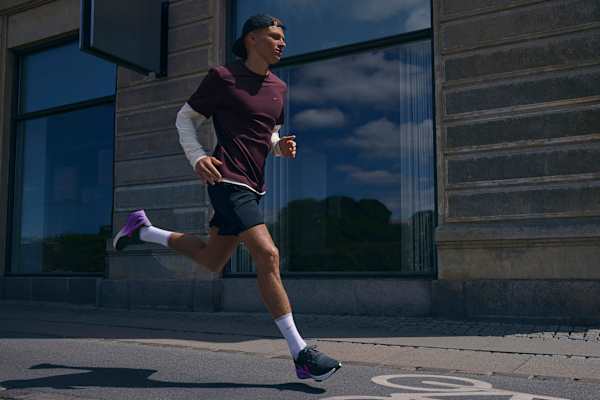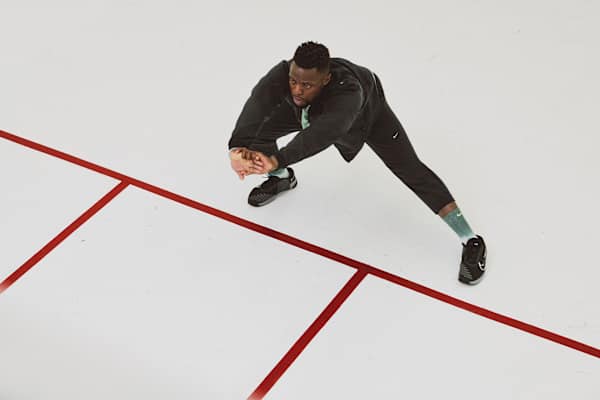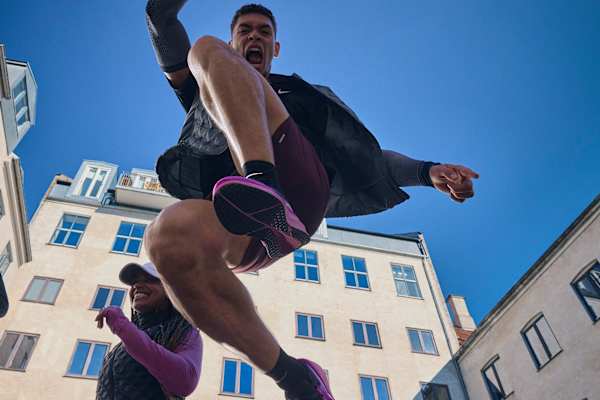How to find your optimal running paces, according to Nike Coaches
Sport & activity
Switching your pace can help prevent injury and improve your performance. Coaches detail what you need to know.

Running is a popular activity that benefits both physical and mental health. But, if you run at the same pace each time, you're missing out on benefits that come from varying your running pace. Running your fastest for every run is hard on your body and can lead to injury.
The fastest a human is known to run is approximately 27.5 miles per hour, a pace attained by sprinter Usain Bolt when he set the world record for the 100-metre dash in 2009. Of course, the average person cannot run at a pace anywhere close to this, and even Bolt only reached this milestone briefly in his career. Running at such a high speed is not sustainable. "Even seasoned runners require lots of slow, easy running", running coach Dave Ridley says.
The key is to vary your running paces, which is important for any runner. "The main reason we vary our paces across different runs is to periodise our training to optimise our running and reach our peak performance when it matters—whether that is race day or the day you want to achieve your goal", running coach Lydia O'Donnell says.
So, what are your optimal running paces, and how do you determine them? Several Nike running coaches, including Ridley and O'Donnell, explain this process and its importance.
Have a purpose or goal
Each time you head out for a run, have a purpose or goal in mind. Depending on your goal, you should vary your pace each time you run.
"Every run has a purpose, and every run has a pace", O'Donnell says. "It is important to know the purpose of each run to give yourself the best chance of executing the run correctly based on the intensity of the session and the pace of the run".
O'Donnell says there are different types of runs based on your specific training goal: long runs, speed runs and recovery runs. "Long runs are all about building your endurance", she notes, explaining that the goal of this run is to maintain a comfortable, sustainable pace. The speed run, she says, "is more to improve your pace, strength and speed, working closer to goal race pace". This type of run is more intense to meet your goals. Lastly, the recovery run consists of a slow, "easy" pace "to help us recover from the last hard run or prepare for the next", O'Donnell notes.
If you find yourself easily out of breath during a long run or a recovery run, you should rethink your pace.
"Starting with the easy run and recovery run, the number one mistake I see is runners running their easy days too fast", running coach Jes Woods says. She suggests that, for recovery runs, you run about two to three minutes per mile slower than your 3K race pace. "You have to keep your easy days easy so that your harder days are hard", she suggests.
Wearing the right pair of shoes should also make your run more comfortable. Designed for road racing, marathon-goers might opt for the Alphafly 3.
If you're in need of a new pair of kicks for sprinting, the Nike Maxfly 2 Blueprint could be a good pick.
If you're interested in checking out one of the fastest long-distance track spikes, the Nike Dragonfly 2 Blueprint might be the right option for you.
Set a foundation, a pace that feels comfortable
Being aware of your optimal running paces will help prevent you from running too fast all the time, allowing you to build endurance and run your best when needed. How do you figure out your optimal pace for each type of run?
If you're a new runner, this can take time to figure out. "The best approach is to go for a run for the time that feels comfortable for you", O'Donnell says. This run time is based on your physical fitness, experience level, current running ability and conditioning, as well as the impact that running places on your body.
You'll know you're running at a comfortable pace if you can carry on a conversation with someone while running. This, according to O'Donnell, acts as a baseline measure. "It should not feel like a jog, but a pace that feels achievable", she explains. Once you determine this pace, you can figure out your slower and faster paces by slowing down and speeding up about 30 to 90 seconds per kilometre.
Woods also suggests conducting your own benchmark test by running a trial run of 3 kilometres and then using a pace calculator to determine your steady pace. This will help determine your running pace for this length of a race and other distances, so it is a good place to start.
Time is telling
"As you get more into the rhythm of running, you will become more comfortable with understanding your pace and how it should vary across different runs", O'Donnell says, adding that testing out a variety of running paces is helpful. "Because even when you are not training for a marathon, you may do runs at marathon pace to help with your endurance for the shorter distances", she explains.
Running is not easy, but if you stick with it and run consistently, you should see positive changes over time. "It takes time and patience to become physically conditioned to the impact of running and to mentally overcome how tough it can be", she says. "Giving yourself the time to overcome these barriers is important, as the goal is to fall in love with running and see it as a form of movement that you can ideally do forever".
Varying your pace benefits runners of all types
Each pace should be different, which is "true for any runner, beginner or seasoned", Woods says.
While varying your pace benefits new and experienced runners alike, the benefits for each may be different. "When it comes to the mental conditioning of running, a helpful approach for beginner runners to find enjoyment in running is to have variety in your training", O'Donnell says. "Playing into different paces and different types of runs can help keep you engaged in the run and motivated, as you're constantly doing something different".
Varying your pace can also be helpful for another reason. If you're a woman of reproductive age, you may want to adjust your pace based on the hormonal fluctuations caused by your monthly cycle. "If you are someone who is more impacted by these hormonal fluctuations, you should pull back your paces during the cycle phases where your recovery time and ability to reach the suggested paces is more challenging", O'Donnell explains. "This will allow you to not only optimise your physiology but your training as well".
For experienced runners, switching up the pace adds variety to their training and helps them become stronger runners over time. "This is about periodisation of training, which is key in a training block but even in a training week", O'Donnell explains. "Periodisation is what allows us to gain consistency in our training, and consistency is key to becoming an even better runner".
Words by Erica Brooke Gordon

